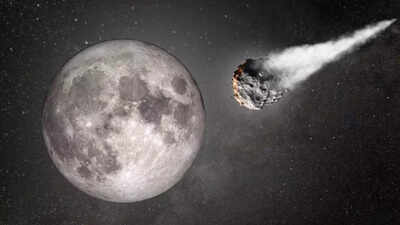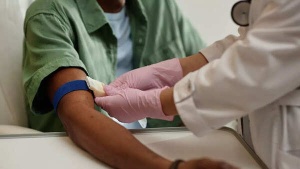NASA issues alarming warning: 'City killer' asteroid could strike Moon in 2032, threatening Earth’s satellites

A potentially catastrophic asteroid, a "city killer," is projected to collide with the Moon, potentially creating hazardous repercussions for Earth. While the asteroid, designated 2024 YR4, no longer represents a direct threat to our planet, NASA estimates a 4.3% probability of impact on the lunar surface by December 22, 2032. A collision could result in approximately 10,000 tonnes of lunar debris being ejected into space. Earth's gravity might then pull a substantial portion of this debris into orbit, posing a severe threat to critical satellites and infrastructure.
According to simulations led by Dr. Paul Wiegert at the University of Western Ontario, the asteroid, measuring 60 meters in diameter, could impact the Moon at speeds exceeding 29,000 mph. This impact would likely create a crater 0.6 miles wide, marking the largest lunar collision in over 5,000 years. Although the Moon would absorb the direct impact, the primary concern involves the resulting debris propelled into space.
Dr. Wiegert’s team anticipates that 10% to 30% of the ejected lunar material, ranging in size from 0.1 to 10 millimeters, could be drawn towards Earth by gravitational forces. These high-speed fragments, despite their small size, could significantly disrupt or disable satellites. Dr. Wiegert stated to New Scientist, "We were a little bit surprised at the possibility of there being a substantial amount of material at the Earth."
Simulations indicate that this space debris could elevate particle impact rates by 10 to 1,000 times above normal levels, leading to potential satellite failures across multiple orbits. Dr. Wiegert cautions that systems such as SpaceX’s Starlink and other satellite constellations could endure "hundreds to thousands" of micro-impacts. This could trigger widespread communication blackouts and GPS malfunctions.
The threat extends beyond Earth. NASA's planned Lunar Gateway space station and Artemis lunar missions could also be at risk. Rovers, landers, and astronauts operating on or near the Moon could face exposure to debris travelling at lethal speeds. A 1mm particle could damage solar cells or puncture spacesuits, while larger fragments, up to 10mm, could breach spacecraft interiors.
Professor Mark Burchell of the University of Kent stressed the gravity of multiple concurrent satellite failures. He emphasized that simultaneous outages would strain resources and emergency response systems more than occasional failures over a decade. Implementing preventive strategies and shielding technologies may become urgent priorities in the coming years.
Although the impact risk is currently estimated at 4.3%, NASA and other international agencies continue to monitor asteroid 2024 YR4. Initial emergency observations using the James Webb Space Telescope helped rule out an Earth-bound impact, but the trajectory toward the Moon will be reassessed as new data becomes available. Scientists concur that, while the event is not certain, preparing for its potential effects remains critical.
Newer articles
Older articles
-
 This new AI tool can help you book train tickets, get refunds and check details on IRCTC website and app
This new AI tool can help you book train tickets, get refunds and check details on IRCTC website and app
-
 5 smart tricks to instantly influence anyone (without being pushy), as per psychology
5 smart tricks to instantly influence anyone (without being pushy), as per psychology
-
 Cancer could be detected 3 years before symptoms appear with a simple blood test; new study reveals
Cancer could be detected 3 years before symptoms appear with a simple blood test; new study reveals
-
 ESA reveals the first stunning images of an artificial solar eclipse created by Proba-3 satellites
ESA reveals the first stunning images of an artificial solar eclipse created by Proba-3 satellites
-
 Don't worry about the outside world: Tendulkar's advice to Gill
Don't worry about the outside world: Tendulkar's advice to Gill
-
 Chess: 'My wife is way more attracted to me now' — Magnus Carlsen after record rating in freestyle
Chess: 'My wife is way more attracted to me now' — Magnus Carlsen after record rating in freestyle
-
 NASA astronauts prepare ‘space sushi’ aboard the ISS in zero gravity during a heartwarming crew celebration
NASA astronauts prepare ‘space sushi’ aboard the ISS in zero gravity during a heartwarming crew celebration
-
 Amitabh Bachchan calls working with son Abhishek Bachchan his 'greatest blessing'
Amitabh Bachchan calls working with son Abhishek Bachchan his 'greatest blessing'
-
 Tait rues new-ball miss as Nissanka punishes Bangladesh
Tait rues new-ball miss as Nissanka punishes Bangladesh
-
 How do graphic designers convert JPG to PDF (Portable Document Format)?
How do graphic designers convert JPG to PDF (Portable Document Format)?